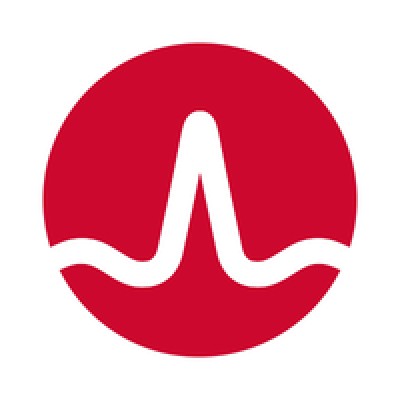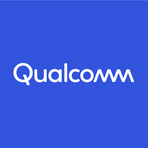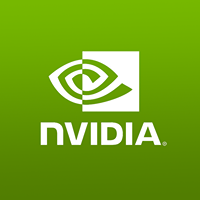The Silicon Struggle: Intel's Quest for Revival
March 13, 2025, 10:33 pm
Intel, once the titan of the semiconductor industry, now finds itself at a crossroads. The company, synonymous with the birth of Silicon Valley, is grappling with an identity crisis. With new leadership under Lip-Bu Tan and potential partnerships with TSMC, the stakes have never been higher.
Lip-Bu Tan, Intel's newly appointed CEO, is stepping into a role that feels like a high-wire act without a safety net. His history as an underdog in the tech world is both a blessing and a burden. Tan is not a household name, but in the corridors of power within the tech industry, he is a familiar face. His connections run deep, and his experience spans decades. Yet, leading Intel is a different beast altogether.
Tan's journey began in Malaysia, where he learned the value of perseverance. He studied nuclear engineering at MIT, a foundation that set the stage for his future in tech. After founding Walden International, a venture capital firm, he became a champion for startups. He saw potential where others saw risk. His investments in companies like Annapurna Labs and Nuvia have paid off handsomely, but now he faces a monumental task: reviving a giant that has lost its way.
Intel's recent performance has been dismal. The company reported a staggering net loss of $18.8 billion in 2024, its first loss since 1986. The once-revered brand has seen its stock plummet, losing more than half its value in just a year. The semiconductor landscape has shifted dramatically, and Intel has struggled to keep pace. Competitors like AMD and Nvidia have surged ahead, leaving Intel in the dust.
In this environment, Tan's underdog mentality may be just what Intel needs. He understands the importance of agility and innovation. He knows that the future of chip-making lies not just in manufacturing but in design. His time at Cadence Design Systems taught him that success comes from aligning with the right partners. Now, he must navigate the complex web of relationships that define the semiconductor industry.
Enter TSMC, the world's leading contract chip maker. TSMC is eyeing a joint venture to operate Intel's foundry division. This proposal could be a lifeline for Intel, but it comes with its own set of challenges. TSMC's pitch to companies like Nvidia, AMD, and Broadcom reflects a desire to create a collaborative ecosystem. However, the U.S. government is wary of foreign ownership in a company so critical to national interests.
The Trump administration is keen on reviving American manufacturing, and Intel is at the center of that vision. The administration's push for TSMC to assist Intel underscores the urgency of the situation. Yet, any partnership will require careful navigation of trade secrets and manufacturing processes. Intel and TSMC operate on different wavelengths, and merging their operations will be no small feat.
The potential joint venture is still in its infancy. Intel's board is divided, with some members supporting the deal while others remain skeptical. The company's history of partnerships has been mixed, and the road ahead is fraught with uncertainty. Yet, the prospect of TSMC's involvement could inject much-needed vitality into Intel's operations.
As Tan takes the helm, he must focus on innovation. The semiconductor industry is evolving rapidly, driven by the demand for AI and advanced computing. Intel's future hinges on its ability to adapt. The 18A manufacturing process, touted as superior to TSMC's 2-nanometer technology, could be a game-changer. However, it has also become a point of contention in negotiations.
Intel's legacy is at stake. The company must reclaim its position as a leader in chip design and manufacturing. Tan's underdog strategies may be the key to this revival. He has a track record of identifying and nurturing talent. Now, he must harness that talent within Intel to drive innovation.
The challenges are immense. The semiconductor industry is a high-stakes game, and the competition is fierce. Companies are racing to develop the next generation of chips, and Intel cannot afford to lag behind. The clock is ticking, and the pressure is mounting.
In this landscape, Tan's leadership will be tested. He must balance the demands of shareholders with the need for innovation. He must foster a culture of creativity while navigating the complexities of partnerships. The road ahead is uncertain, but the potential rewards are enormous.
Intel's story is one of resilience. The company has weathered storms before, and it can do so again. With the right leadership and strategic partnerships, Intel can rise from the ashes. The journey will be arduous, but the destination is worth the struggle.
In the end, the future of Intel is not just about chips; it's about reclaiming a legacy. It's about proving that even giants can adapt and thrive in a changing world. As Tan steps into his role, the eyes of the tech world are upon him. The challenge is great, but so is the opportunity. The silicon struggle is just beginning.
Lip-Bu Tan, Intel's newly appointed CEO, is stepping into a role that feels like a high-wire act without a safety net. His history as an underdog in the tech world is both a blessing and a burden. Tan is not a household name, but in the corridors of power within the tech industry, he is a familiar face. His connections run deep, and his experience spans decades. Yet, leading Intel is a different beast altogether.
Tan's journey began in Malaysia, where he learned the value of perseverance. He studied nuclear engineering at MIT, a foundation that set the stage for his future in tech. After founding Walden International, a venture capital firm, he became a champion for startups. He saw potential where others saw risk. His investments in companies like Annapurna Labs and Nuvia have paid off handsomely, but now he faces a monumental task: reviving a giant that has lost its way.
Intel's recent performance has been dismal. The company reported a staggering net loss of $18.8 billion in 2024, its first loss since 1986. The once-revered brand has seen its stock plummet, losing more than half its value in just a year. The semiconductor landscape has shifted dramatically, and Intel has struggled to keep pace. Competitors like AMD and Nvidia have surged ahead, leaving Intel in the dust.
In this environment, Tan's underdog mentality may be just what Intel needs. He understands the importance of agility and innovation. He knows that the future of chip-making lies not just in manufacturing but in design. His time at Cadence Design Systems taught him that success comes from aligning with the right partners. Now, he must navigate the complex web of relationships that define the semiconductor industry.
Enter TSMC, the world's leading contract chip maker. TSMC is eyeing a joint venture to operate Intel's foundry division. This proposal could be a lifeline for Intel, but it comes with its own set of challenges. TSMC's pitch to companies like Nvidia, AMD, and Broadcom reflects a desire to create a collaborative ecosystem. However, the U.S. government is wary of foreign ownership in a company so critical to national interests.
The Trump administration is keen on reviving American manufacturing, and Intel is at the center of that vision. The administration's push for TSMC to assist Intel underscores the urgency of the situation. Yet, any partnership will require careful navigation of trade secrets and manufacturing processes. Intel and TSMC operate on different wavelengths, and merging their operations will be no small feat.
The potential joint venture is still in its infancy. Intel's board is divided, with some members supporting the deal while others remain skeptical. The company's history of partnerships has been mixed, and the road ahead is fraught with uncertainty. Yet, the prospect of TSMC's involvement could inject much-needed vitality into Intel's operations.
As Tan takes the helm, he must focus on innovation. The semiconductor industry is evolving rapidly, driven by the demand for AI and advanced computing. Intel's future hinges on its ability to adapt. The 18A manufacturing process, touted as superior to TSMC's 2-nanometer technology, could be a game-changer. However, it has also become a point of contention in negotiations.
Intel's legacy is at stake. The company must reclaim its position as a leader in chip design and manufacturing. Tan's underdog strategies may be the key to this revival. He has a track record of identifying and nurturing talent. Now, he must harness that talent within Intel to drive innovation.
The challenges are immense. The semiconductor industry is a high-stakes game, and the competition is fierce. Companies are racing to develop the next generation of chips, and Intel cannot afford to lag behind. The clock is ticking, and the pressure is mounting.
In this landscape, Tan's leadership will be tested. He must balance the demands of shareholders with the need for innovation. He must foster a culture of creativity while navigating the complexities of partnerships. The road ahead is uncertain, but the potential rewards are enormous.
Intel's story is one of resilience. The company has weathered storms before, and it can do so again. With the right leadership and strategic partnerships, Intel can rise from the ashes. The journey will be arduous, but the destination is worth the struggle.
In the end, the future of Intel is not just about chips; it's about reclaiming a legacy. It's about proving that even giants can adapt and thrive in a changing world. As Tan steps into his role, the eyes of the tech world are upon him. The challenge is great, but so is the opportunity. The silicon struggle is just beginning.


